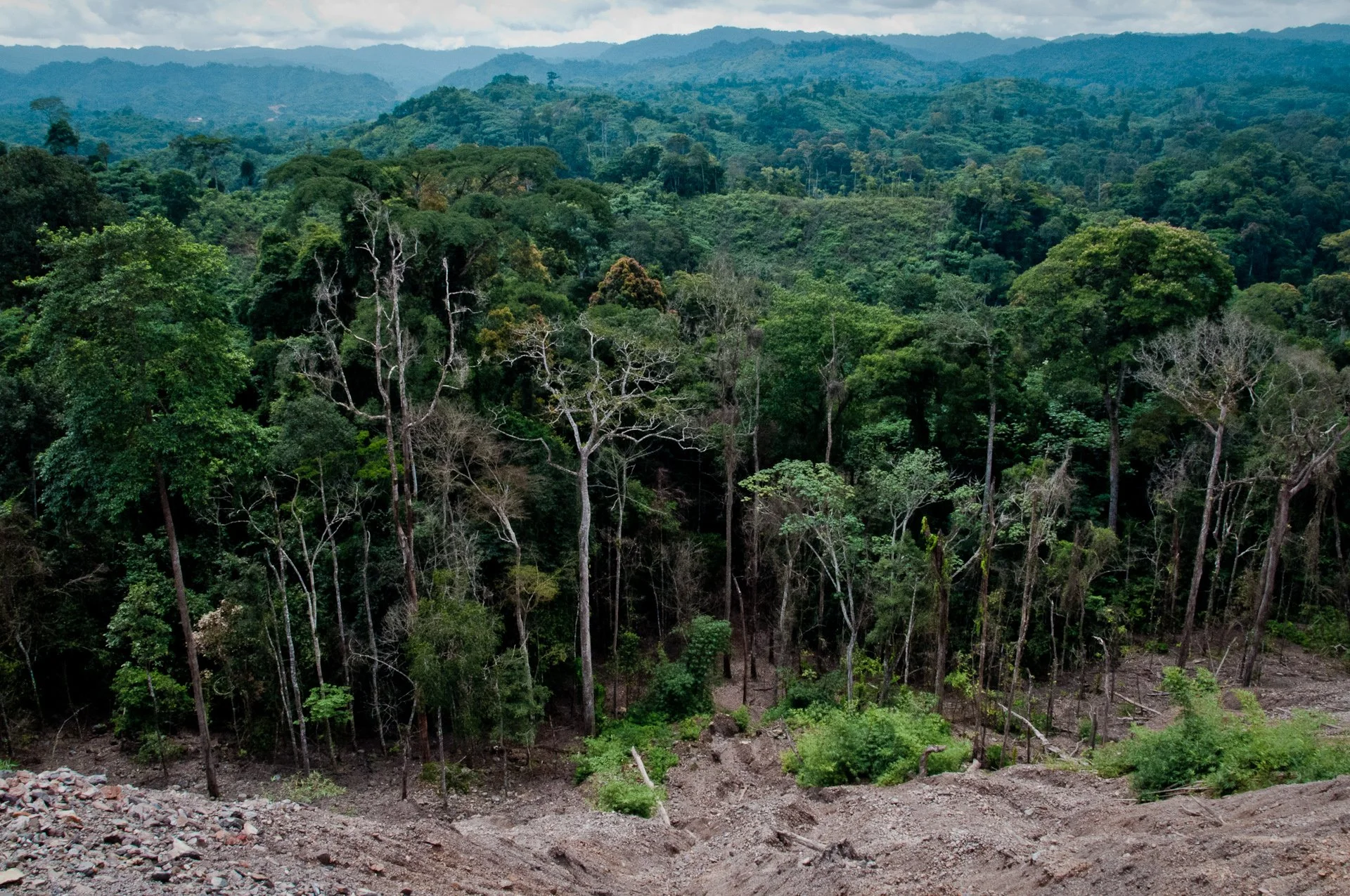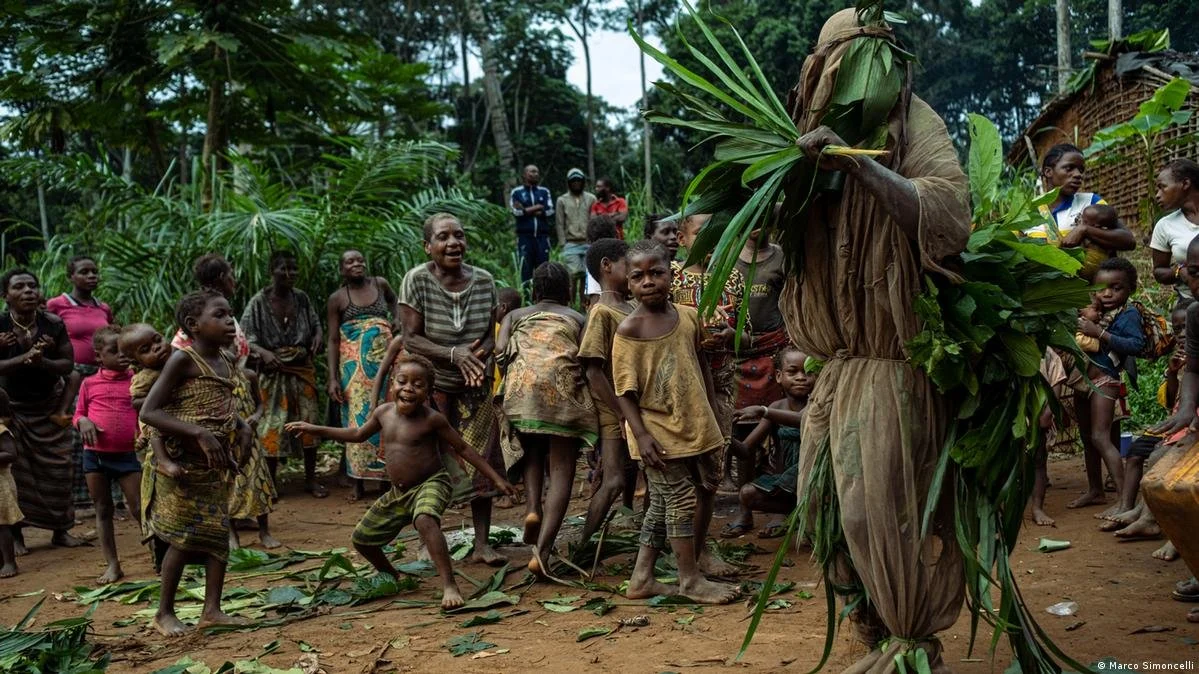When No Trees Are Left
Written by: Sophia Hernandez
What happens when no trees are left?
That’s a reality no environmentalist, or individual, dares to think about. Without them, the very air humans breathe is compromised. However, it’s a reality we need to start examining, because deforestation around the world is not just a problem: it’s a crisis.
THE REALITY OF DEFORESTATION
Deforestation or logging, is “the purposeful clearing of forested land” for industries such as agriculture, logging, and paper. Every year, the world clears out 10 million hectares of forest, equivalent to the size of Portugal. While this practice benefits industry, it puts the environment at risk in many different ways.
Trees intake carbon dioxide and release oxygen into the atmosphere, an occurrence that aids in photosynthesis (a process where plants use sunlight, water, and carbon dioxide to create glucose to help them grow). Additionally, trees intake such a large amount of carbon dioxide that they are considered carbon sinks, or a natural source that absorbs carbon dioxide in its tissues. Carbon sinks exist in all areas of the environment, from forests to the deep ocean. By sequestering carbon, they aid in temperature regulation and climate around the globe.
When trees decay, become diseased, burn, or are chopped down, they are unable to absorb carbon dioxide. In turn, more greenhouse gases escape from the compromised trees, releasing them into the environment. With that being said, damage to one type of carbon sink can ignite damage to all.
A part of aiding in temperature is controlling precipitation, a function trees and forests also take place in. The water molecules from precipitation help to balance ecosystems, such as tropical rainforests, which retain moisture in the atmosphere and the soil. Deforested areas eliminate this source of moisture, causing a precipitation imbalance that can deplete soil of moisture and nutrients, an occurrence known as soil erosion.
These are just a few of the effects of deforestation on a broad scale. Let’s examine some specific biomes and their populations.
BOREAL FOREST
Boreal, or taiga forests are the largest biome in the world, stretching across most of the Northern Hemisphere. These forests are known for their expanse of centuries old trees and lush greenery. However, they are now under threat due to the rate of anthropogenic, or human-caused, deforestation. The Natural Resources Defense Council found that “each year, industrial logging operations clear cut approximately one million acres of intact forest, equivalent to five NHL hockey rink-size areas every minute,”. Boreal forests are the largest resources for logging and timber production; Canada and the United States are the largest consumers of these products.
Countless mammals, birds, and reptiles are supported by boreal forests, depending on their environment to dictate migratory, breeding, and hibernation patterns. Logging releases carbon dioxide, warming the biome while decreasing the amount of habitable space for these species.
Similarly, Canada’s boreal forest is home to over 600 Indigenous communities that partially or totally rely on its resources. While deforestation has also driven them to urban areas, other communities reinforce generations old knowledge to sustainability manage and conserve their forests.
For example, the Cree First Nation of Waswanipi, a Indigenous community near Quebec, have been rallying for two decades to keep undisturbed forests in their area intact. Particularly, the Broadback River watershed (an area where rainfall and runoff drains) is an essential resource for members of the Waswanipi, serving as a place for gathering and tradition. While the federal government has kept their promise on protecting Indigenous communities and their environments, Quebec’s legislation has remained largely unchanged in their move toward industrialization. Chief Happyjack of the Waswanipi makes a statement that can be applied to all boreal forests. “[They don’t] protect what should really be protected,”
TROPICAL FORESTS
Tropical forests and rainforests are some of the most diverse ecosystems in the world, home to over 50% of Earth’s plant and animal species. The Amazon Rainforest alone is home to 3 million species of animals and 2,500 species of tree, show-casing how vital these biomes are to our environment. For humans, tropical forests benefit approximately 1.5 billion people through ecosystem services such as and assist globally in climate regulation through sequestering carbon.
However, because of agriculture, wildfires, and other environmental concerns, tropical forests are shrinking before our eyes. A study by the Global Forest Review from the World Resources Institute reported 6.73 mega hectares of tropical forests were lost in 2024. 48% succumbed to fires, and the other 52% fell victim to other causes, such as agricultural development.
Though environmental disasters were the main driver of tropical forest loss in 2024, it is essential to raise the question of why. These biomes are known for their humidity, which would usually lower the risk of a fire occurring at large magnitudes. However, the continuation of deforestation world-wide releases carbon dioxide into the atmosphere, which increases temperatures, and makes room for environmental changes such as drought.
Martina Igini, Editor-in-Chief for Earth.org writes, “In the case of the Amazon rainforest, research shows that at least 80% of its trees would be needed in order to keep the hydrological [water] cycle going. With nearly 17% of the forest already lost, the Amazon is currently at its tipping point”. Tropical rainforests are essential to Earth’s water system, climate regulation, and food production. What happens when they are no longer able to provide these resources?
THE ROLE OF POLITICS
In the past three decades, climate legislation has been the key to making headway in sustainable development and conservation. In the Global North, the European Union (EU) converted a sweeping “Green Deal” bill into law in December of 2020 fighting against deforestation and climate change for over blank countries.
This key piece of climate legislation specifically targets commodities such as rubber, timber, cocoa, and coffee (see full list at https://environment.ec.europa.eu). It requires that companies:
Confirm that their products have not been produced on land subjected to deforestation
Comply with national regulations on production and indigenous rights
Considering the EU is a major economy, this is a significant step toward lowering global emissions from deforestation. In spite of this, seventeen countries from the Global South are advocating for an amendment to this law. Andri Hadi, Indonesia’s EU ambassador cites that, “The EU’s one-size-fits-all approach [with the Green Deal] as adhered to by the EUDR does not take into consideration the differences and specificity of each country, whether it be the flora, fauna or its people and its traditions".
A similar bill has been introduced by Senator Brian Schatz in the United States under the FOREST Act (read the bill here). The bill applies restrictions on foreign trade, prohibiting commodities wholly or partially produced on illegally deforested land. Additionally, the FOREST Act establishes illegal deforestation as a specified unlawful activity, which makes it a federal offense with financial and criminal penalties.
In the Global South, a different issue is being tackled concerning deforestation: the rights of Indigenous people residing in forests. The Democratic Republic of the Congo (DRC), home to over 137 hectares of tropical forest, passed a law (read the law here) in 2022 to protect Indigenous rights of the Pygmée people. Through this, the DRC is solidifying the rights to their forests, directly contributing to reductions in deforestation.
The DRC’s law outlines that
Certain rights to Indigenous people are protected within REDD+ (Reducing Emissions from Deforestation and Forest Degradation in developing countries)
Indigenous communities can obtain rights for up to 50,000 hectares of forest
Indigenous peoples in the DRC make up 1% to 3% percent of the population. At a glance, this is a small number, until it is realized that this statistic represents roughly 1-3 million people and the forests they call home. The DRC’s law is especially important, as it reduces threats like population growth and agricultural expansion from dismantling an ecosystem that several species of wildlife, and millions of Indigenous people have relied on for centuries.
AN INDIVIDUAL APPROACH
All global efforts have begun with one person deciding to take action. With this in mind, there are many actions one can take as an individual to reduce the effects and rates of deforestation.
Choose sustainable brands: Using online guides and looking for the FSC “check label” can help individuals shop ethically, while also helping reduce deforestation. Good On You (goodonyou.eco) is a beauty and clothing rating website that points consumers toward brands that produce sustainability, circulate their materials, and practice waste management, to name a few. They also verify a brand’s value on worker’s rights and adherence to national labour laws, as well as animal testing, and material sources.
Donate & contribute: While not everyone has the opportunity to directly contribute to reforestation, financial support can go a way to assisting organizations in launching and continuing conservation/reforestation efforts. One Tree Planted (onetreeplanted.org) is an international nonprofit that has planted over 135 million trees across 82 different countries, and donations are their main mode of funding. If donating isn’t an option, using applications such as Ecosia (ecosia.com) Forest (forestapp.cc), and Treeapp (thetreeapp.org) can help replenish forests without having to spend money.
Advocate: Activism can be as simple as a public comment at a town hall meeting, and as large as a regional protest. If there is a bill, proposition, or policy in your city, state, or country that will contribute to deforestation if passed, take action! The Activist Handbook for Climate Activism (https://activisthandbook.org) provides guidance on how to organize a protest, provide workshops, and start a community campaign.
A world with minimal trees is not yet present—but it is fast approaching. With our current trends, vital carbon sinks will be unable to regulate our climate, habitats will be lost for millions of species, and Indigenous communities that once called forests home will have no place to go. Taking individual action, educating others, and making strides on a state, national, or international stage all contribute to reducing the deforestation crisis. The truth of the matter is, the world is in a race against time to ensure that deforestation does not become an accepted reality, and that its effects are contained, reduced, or eliminated altogether.
If we do not take action, it is only a matter of time.
References
United Nations Environment Programme. (2024). How halting deforestation can help counter the climate crisis. Available at: https://www.unep.org/news-and-stories/story/how-halting-deforestation-can-help-counter-climate-crisis
Sustainable Ohio Public Energy Council. Carbon Sinks and Sources. Available at: https://www.sopec-oh.gov/carbon-sinks-and-sources
Pachamama Alliance. Effects of Deforestation. Available at: https://pachamama.org/effects-of-deforestation
Igini, M. (2025). How does deforestation affect the environment? Available at: https://earth.org/how-does-deforestation-affect-the-environment/
Skene, J. (2022). Canada’s Boreal Forest: Why It’s So Important. Natural Resources Defense Council. Available at: https://www.nrdc.org/stories/canadas-boreal-forest-why-its-important
Staff, G. (2022). Biodiversity and The Amazon Rainforest. Greenpace. Available at: https://www.greenpeace.org/usa/biodiversity-and-the-amazon-rainforest/
Aragon-Osejo, J. Gonzalez del Pliego, P. Hansen, A. Pillay, R. Venter, M. Venter, O. Watson, J. (2021). Tropical forests are home to over half of the world’s vertebrae. Ecological Society of America. Available at: https://esajournals.onlinelibrary.wiley.com/doi/10.1002/fee.2420
Carter, S. Goldman, E. Sims, M. (2025) Fires Drive Record-Breaking Tropical Forest Loss in 2024. Global Forest Review. Avialable at: https://gfr.wri.org/latest-analysis-deforestation-trends
Schatz, B. (2023). S.3371 - FOREST Act of 2023. United States Congress. Available at:
https://www.congress.gov/bill/118th-congress/senate-bill/3371
Marques de Silva, I. (2023). Why the Global South is Against The EU’s Anti-Deforestation Law. Euro News. Available at: https://www.euronews.com/my-europe/2023/09/20/why-the-global-south-is-against-the-eus-anti-deforestation-law
Kristiningrum, R. Purwanti, E. Ruslim, Y. Sari, D. Utami, W. (2025). Residual stand damage caused by logging operations in secondary forest in Berau District, East Kalimantan, Indonesia. Research Gate. Available at: https://www.researchgate.net/publication/392064842_Residual_stand_damage_caused_by_logging_operations_in_secondary_forest_in_Berau_District_East_Kalimantan_Indonesia
Forest Stewardship Council. (2024). 6 solutions to deforestation and how you can help. (Available at): https://fsc.org/en/blog/solutions-to-deforestation





